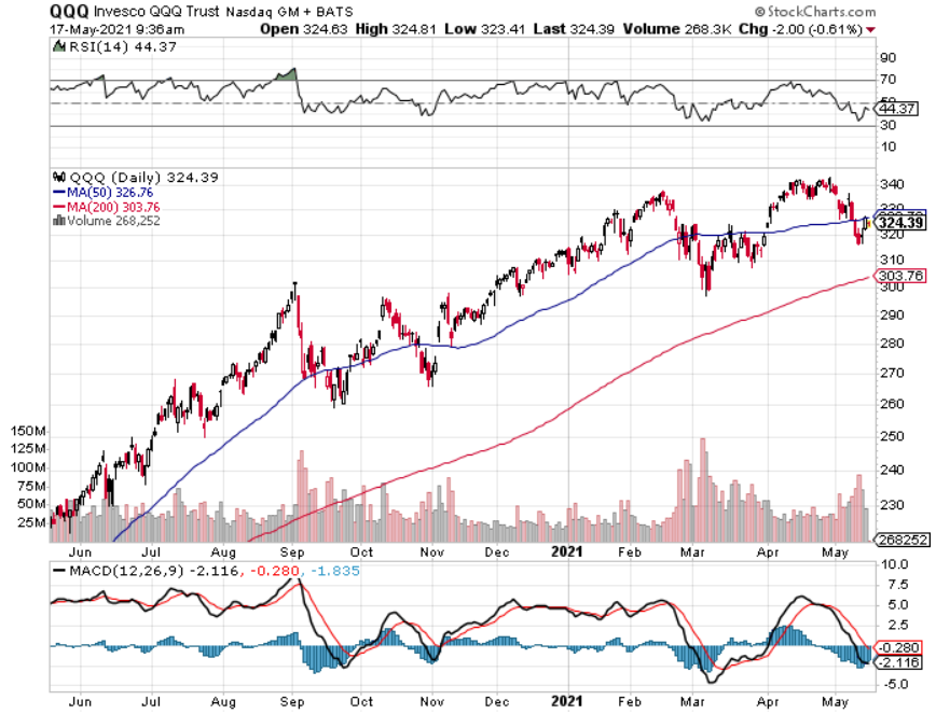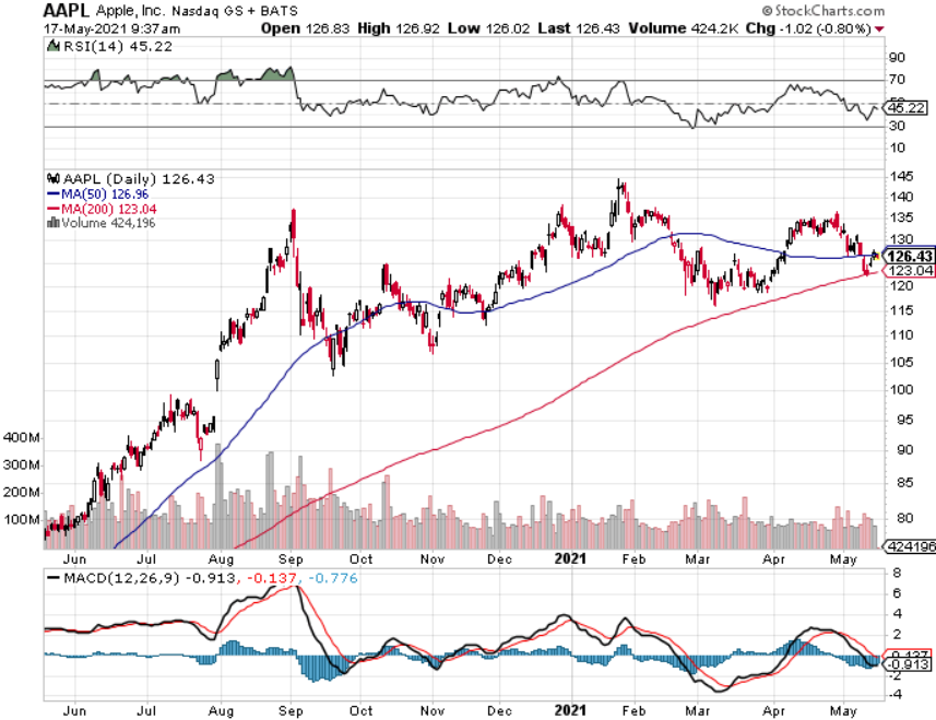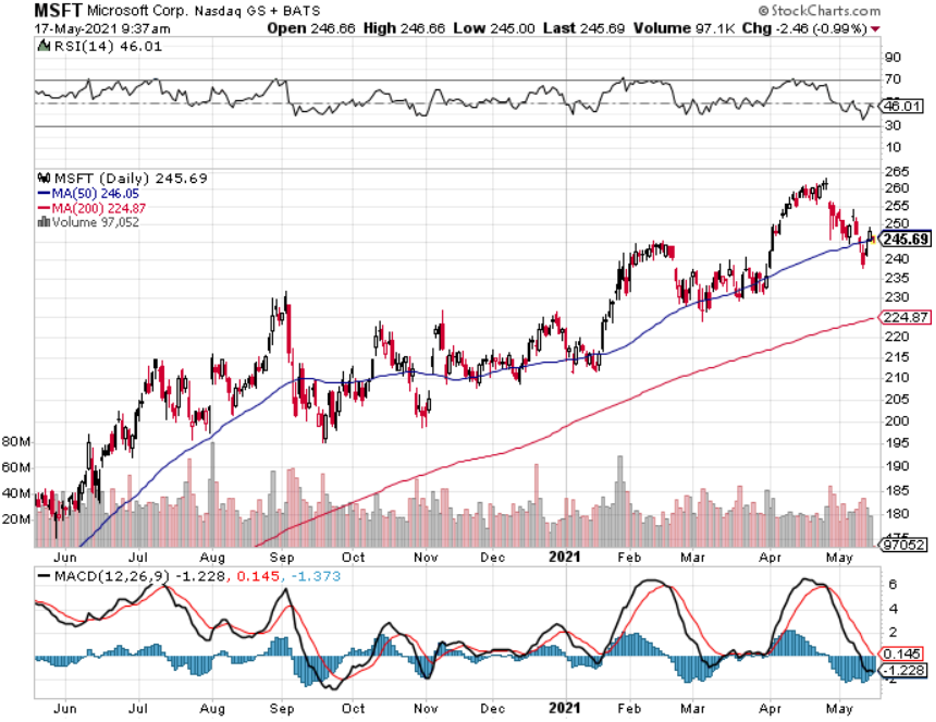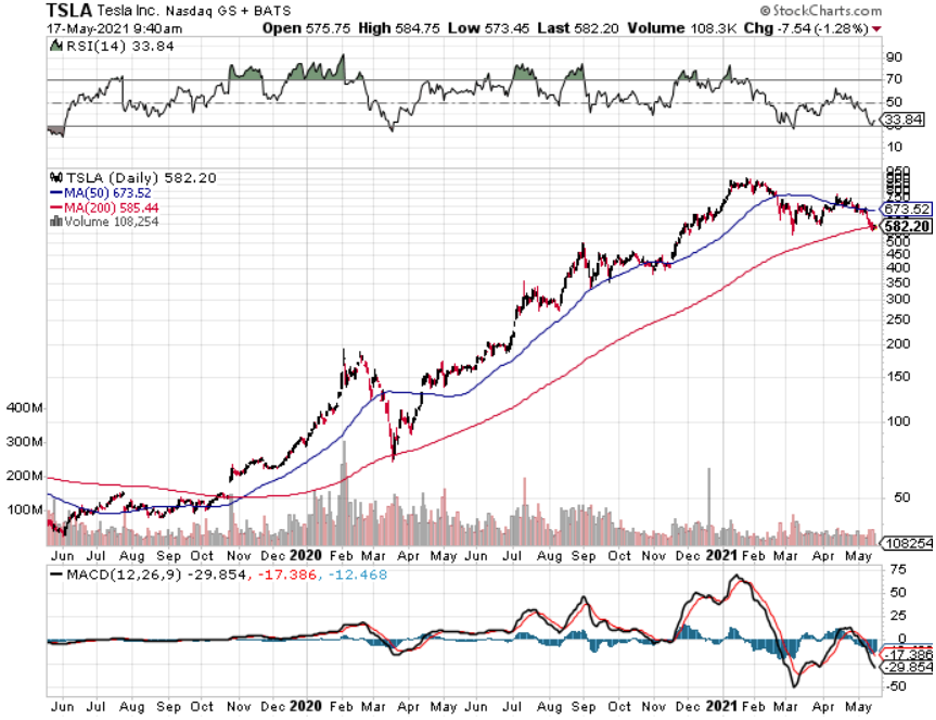High multiple tech stocks often overshoot on the way up and overshoot on the way down.
This is predominately driven by uncontrolled momentum as investors and traders resort to margin to borrow money and add leverage to positions and trends that seem to be working at the time.
Since the start of the year, technology has had to come to grips with a sudden rerating of valuations.
For example, a bellwether stock for the future success of tech, Tesla (TSLA) has corrected 20% year-to-date after more than 700% move up in 2020.
Reliable big-cap tech has been more steadfast in 2021 such as the likes of Apple (AAPL) who have only experienced a less than 2% year-to-date decline in shares.
The biggest winner so far of big-cap tech has to be Alphabet (GOOGL) whose shares have risen around 25% since the beginning of the year.
Even with sky-high expectations, Google is hitting it out of the ballpark and then some.
Simply meeting or doing a nudge over expectations this past earnings season has proved not enough for underlying shares to surge on the results meaning we are fully priced.
Naturally, the more speculative business has felt the worst of the carnage with SPACs down half from their peaks and “artisanal” tech down 30%-50%.
This doesn’t mean tech is over.
Hardly so – It’s just resting.
But readers and investors will need to traverse through a period of multiple contraction and consolidation as high-priced tech stocks are re-rated lower until we reach appetizing multiples.
Simply put, we got ahead of ourselves and there is only so much leverage that can be taken out to chase the rainbows and feed off the momentum.
Microsoft (MSFT) has been another stout stock that is up around 12% year-to-date and a great place to hide out during the consolidation phase.
The cause of the rerating derives specifically from upper management guiding down future revenue and profitability targets.
I have read countless earnings reports that describe a comprehensive dilemma in which the overall structure of the company couldn’t be healthier yet beating prior years’ Covid performance is impossible on a year-to-year basis.
Readers need to understand this year is still priced as a Covid year, but tech companies won’t nearly do as well because the conditions that engulfed Covid like work-from-home and the absence of a vaccine are not here anymore.
There is a health solution in the U.S. and in parts of Europe there are partial solutions and certainly, no lockdown as the Chief of the CDC signals masks are not needed for the vaccinated in public.
The tech market needs to readjust its expectations that will hand off to more of a normalized metric environment and that will happen naturally as we move closer to 2022 and into it.
On a calculation basis, comparing data from 2022 and 2021 will strip out the volatility from the 2020 and 2021 comparisons.
Remember that management uses the prior year as reference points for performance and that phenomenon is now hurting the appearance of relative outperformance.
A top executive at a fintech company had this to say, “The pandemic has accelerated a digital wave of change across almost every industry by three to five years, unleashing a profound and permanent structural transformation.”
I’ll take a 5-year digital transformation in one year if the second year is a time that is needed for earnings’ expectations to consolidate for half a year or so.
I would take that deal anytime if it was my company.
The data also suggests how breathtaking companies like Google and Microsoft are if their future guidance is immune to any expectation.
They are beating whatever consensus is in a Covid year or not.
Take a look at some of the darlings of tech in the height of pandemic like Teladoc (TDOC), and shares are off around 33% year-to-date and even went through a 40% drop from mid-February to the beginning of March.
Avoid those now!
Even if it's not related to cloud software stocks, the dearth of semiconductor chips is beginning to cause pain in every nook and cranny of the global economy catalyzing many firms to delay or even cancel production let alone roll out new models.
This adds to the global malaise of a supply chain that many managements describe as “topsy-turvy.”
Not only is the bottleneck happening as we speak, but it appears as though it could last at least 2 or more years.
When the Fed talks about “transitory” inflationary pressures, at least as it relates to tech, I am not sure what they are smoking.
There has been no concrete data in which they have offered to suggest that it will be transitory unless they have a different definition of transitory from mine.
The accumulation effect of these pressures is why the tech-heavy Taiwan stock market, FTSE TWSE Taiwan 50 Index, comprised of tech stalwarts like Taiwan Semiconductor Manufacturing (TSM) and Hon Hai Precision Industry, declined over 2% today after losing over 8% last week.
Ultimately, investors are moving to higher ground and seeking predictable profitability and raw size over elevated growth rates and loss-making EPS figures.
When the goalposts move, we must move with them and that is what has happened.
Tech investors are more conservative than last year and until the goalposts widen a bit as I expect as we move into Q3 and Q4, we need to be aware of the new rules of the game or who gets penalized for them.







